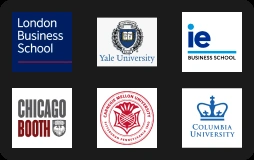
MiM in USA
MiM in USA: A Complete Guide for Indian StudentsAre you considering pursuing a
Table of Contents

If you’re eyeing a Master in Management (MiM) program, you’re likely already aware that it’s a fantastic option for those early in their careers. MiM programs are designed to equip you with a strong foundation in management and business principles, setting you up for leadership roles right from the start. But before diving in, it’s crucial to understand what these programs will cost you.
MiM course fees can vary dramatically depending on where you study, how long your program is, and the reputation of the institution. Getting a clear picture of these costs will help you plan your finances better and avoid any surprises down the line. This blog aims to give you a comprehensive overview of MiM fees globally, along with tips on managing these costs.
The location of your MiM program is one of the biggest factors that will affect your tuition fees. Europe generally offers more affordable options, especially in countries like France and Germany, where public universities keep fees low. In contrast, the UK and the USA tend to have higher tuition costs, reflecting their higher living expenses and education costs.
It’s no secret that top-ranked schools charge top-dollar for their programs. Institutions like HEC Paris, London Business School, and Duke Fuqua are among the best in the world, and their MiM programs come with hefty price tags. However, these fees often come with significant perks, including strong alumni networks, excellent career services, and global recognition.
The length of your MiM program will also impact your costs. Most MiM programs range from 10 months to 2 years. Naturally, longer programs tend to cost more because you’re paying for more classes and campus resources. However, longer programs might also offer more opportunities for internships and networking, which could be beneficial in the long run.
If you’re planning to specialize in a particular area of management, keep in mind that some tracks or electives may come with additional fees. These costs can add up, especially if they involve extra resources or field trips.
Whether you choose to study full-time, part-time, or online will also influence your costs. Full-time programs generally have higher fees because of their intensive nature. Part-time and online programs might be cheaper, but they often take longer to complete and may offer fewer networking opportunities.

MiM Tuition Fees by Region, showcasing top institutions and average annual tuition fees across different regions:
Region | Country | Top Institutions | Average Annual Tuition Fees |
| Europe | France | HEC Paris, ESSEC | €15,000 - €42,000 |
| Germany | Mannheim, ESMT | €10,000 - €20,000 | |
| UK | London Business School, Warwick | £20,000 - £42,000 | |
| North America | USA | Duke Fuqua, Kellogg | $50,000 - $80,000 |
| Canada | UBC Sauder, Queen’s | CAD 30,000 - CAD 60,000 | |
| Asia | India | IIM Ahmedabad, IIM Bangalore | $20,000 - $33,000 |
| China | Tsinghua, CEIBS | $30,000 - $50,000 | |
| Singapore | NUS, SMU | SGD 30,000 - SGD 50,000 | |
| Australia | Australia | Melbourne Business School, UNSW | AUD 50,000 - AUD 55,000 |
While tuition fees are a significant part of the cost of an MiM program, they aren’t the whole picture. Let’s take a look at the other expenses you’ll need to budget for.
Living expenses can vary widely depending on where you study. Here’s an estimate of what you might spend annually
Region | Estimated Living Costs |
Europe | €12,000 - €20,000 |
North America | $15,000 - $25,000 |
Asia | $10,000 - $15,000 |
Australia | AUD 20,000 - AUD 30,000 |
Accommodation, food, transportation, and personal expenses all add up. Cities like Paris and London will be more expensive than, say, Berlin or smaller cities in India.
Don’t forget to budget for textbooks, online resources, and other study materials. Depending on your program, these costs can range from $1,000 to $3,000 per year. Some schools may also charge resource fees for access to online databases or specialized software.
Getting involved in extracurricular activities like clubs, workshops, and networking events is a big part of the MiM experience. However, these activities often come with additional costs, ranging from $500 to $2,000 per year. While optional, they can be crucial for building your network and resume.
If you’re an international student or your program includes study trips, travel costs are another important factor to consider. You might need to set aside several thousand dollars for flights, visas, and accommodation, depending on the distance and frequency of travel.

Scholarships can significantly reduce the financial burden of an MiM program. Here’s a quick overview of what’s typically available:
Region | Typical Scholarship Amounts |
Europe | €5,000 - €20,000 |
North America | $10,000 - $30,000 |
Asia | Varies widely; some cover full tuition |
Australia | Up to 50% of tuition fees |
Scholarships can be merit-based, need-based, or specific to certain groups, such as international students or women in business.
Applying for financial aid can be a bit of a process, but it’s well worth it. Start by researching the scholarships offered by the schools you’re interested in. Make sure to prepare your application well in advance, as you’ll need to submit essays, recommendation letters, and detailed financial information.
Many students also finance their MiM education through student loans. Loan terms vary depending on where you study. In the USA, for example, federal student loans offer relatively low-interest rates and flexible repayment options. In Europe and Asia, you might need to look at private loans or those offered by local banks.
One of the biggest questions is whether an MiM is worth the investment. To figure this out, you’ll need to compare the total cost of the program (including tuition, living expenses, and other fees) with your potential earnings after graduation. The return on investment (ROI) for MiM graduates can be substantial, particularly if you attend a top-tier school.
Here’s an overview of the average starting salaries you can expect after completing an MiM program
Region | Average Starting Salary |
Europe | €50,000 - €80,000 |
North America | $70,000 - $100,000 |
Asia | $40,000 - $70,000 |
Australia | AUD 60,000 - AUD 90,000 |
These figures will vary depending on your industry, the company you work for, and the country you’re in. However, generally speaking, the ROI for an MiM can be quite strong.
Creating a detailed budget is your first step to managing MiM costs effectively. List all your expected expenses, including tuition, living costs, and study materials. Prioritize essential expenses and look for ways to minimize discretionary spending.
Many MiM programs allow students to work part-time or take on internships. This can be a great way to offset living expenses and gain valuable work experience. However, balancing work and study can be challenging, so make sure to check if your visa allows you to work.
When selecting an MiM program, it’s important to consider both the cost and the quality of education. Look for programs that offer a good balance between affordability and the resources, reputation, and networking opportunities that align with your career goals.
Alumni networks can be invaluable for finding scholarships, internships, and job opportunities. Don’t hesitate to reach out to alumni for advice on managing costs and making the most of your MiM experience.

Understanding MiM course fees is crucial for planning your education and future career. The costs can vary widely depending on factors like location, school reputation, and program duration. Don’t forget to consider additional costs like living expenses, study materials, and extracurricular activities.
It’s essential to do your research, compare different programs, and plan your finances carefully. Consider the total cost of the program, explore scholarships and financial aid options, and think about the potential ROI. With the right planning, an MiM can be a smart investment in your future.
Ready to Take the Next Step?
If you’re ready to explore your options, start researching MiM programs that fit your budget and career goals. Don’t hesitate to reach out to MastersBuddy to help you make the best decision for your future.

